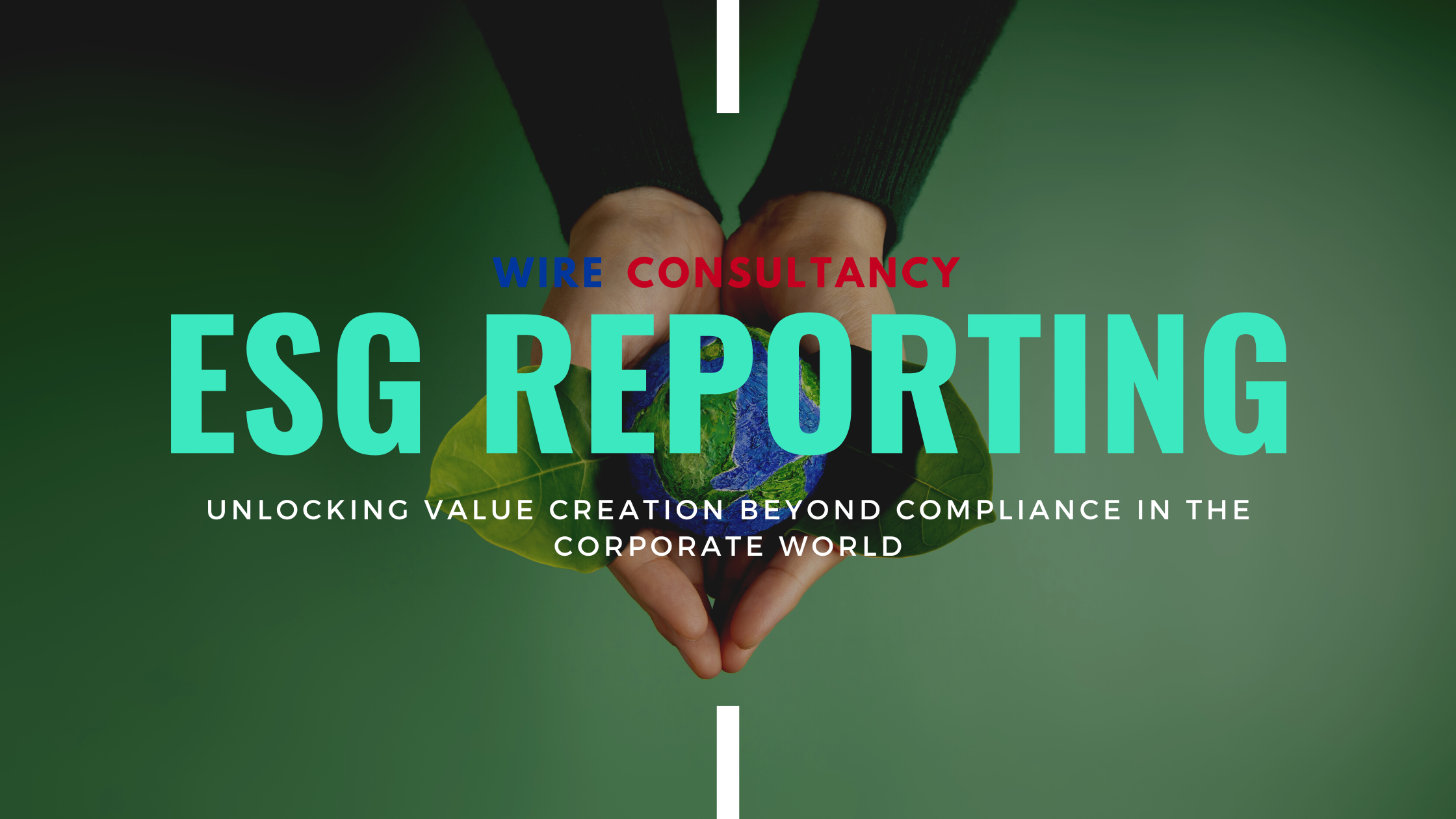In today’s corporate landscape, Environmental, Social, and Governance (ESG) reporting has transcended its role as a mere compliance exercise. Instead, it has become a catalyst for value creation and long-term sustainability. As businesses navigate the dynamic ESG landscape, understanding the intricacies of ESG reporting and its potential to drive strategic advantages is crucial. In this blog, we will delve into the realm of ESG reporting, exploring how organizations can move beyond compliance to unlock value-creation opportunities in the corporate world.
The Evolving Significance of ESG Reporting
– Defining ESG Reporting: Unraveling the multidimensional nature of ESG reporting and its relevance in providing transparent insights into a company’s environmental, social, and governance performance.
– Shifting Paradigms: Discussing the changing expectations of stakeholders and investors, and the growing emphasis on sustainable business practices.
– The Business Case for ESG: Highlighting the potential benefits for organizations, including enhanced reputation, risk mitigation, access to capital, and stakeholder engagement.
Understanding Organizations’ ESG Reporting Needs
– Materiality Assessment: Outlining the importance of conducting a comprehensive materiality assessment to identify and prioritize the ESG factors most relevant to the organization’s business and stakeholders.
– Setting Goals and Targets: Discussing the significance of establishing clear ESG goals and targets that align with the organization’s overall strategic objectives.
– Data Collection and Management: Exploring effective methodologies for gathering, organizing, and verifying ESG data, including the use of technology and data analytics.
Key Considerations in ESG Reporting
– Reporting Frameworks: Examining widely recognized ESG reporting frameworks such as the Global Reporting Initiative (GRI), Sustainability Accounting Standards Board (SASB), and Task Force on Climate-related Financial Disclosures (TCFD), and their applicability to organizational reporting needs.
– ESG Metrics and Indicators: Identifying key performance indicators (KPIs) and metrics relevant to the organization’s industry and value chain, ensuring meaningful and comparable reporting.
– Stakeholder Engagement: Emphasizing the importance of engaging with stakeholders throughout the ESG reporting process to ensure transparency and relevance.
Leveraging ESG Reporting for Value Creation
– Integrating ESG into Business Strategy: Illustrating how embedding ESG considerations into the core business strategy can drive innovation, foster stakeholder trust, and generate competitive advantages.
– Enhancing Risk Management: Exploring how ESG reporting can enable organizations to identify, assess, and mitigate ESG-related risks, ensuring long-term sustainability.
– Building Stakeholder Relationships: Highlighting the role of ESG reporting in nurturing strong relationships with investors, customers, employees, and communities.
Overcoming Challenges in ESG Reporting
– Data Quality and Availability: Addressing the challenges associated with data quality, availability, and comparability, and providing strategies to overcome these hurdles.
– Integrated Reporting: Discussing the potential benefits of integrated reporting, which combines financial and non-financial information, providing a holistic view of an organization’s performance.
– Continuous Improvement: Stressing the importance of an iterative approach to ESG reporting, with regular assessments, feedback loops, and improvement plans.
Conclusion:
ESG reporting has evolved into a powerful tool for organizations to demonstrate their commitment to sustainable practices, drive value creation, and build resilient business models. Beyond compliance, ESG reporting provides a strategic roadmap for organizations to navigate complex environmental, social, and governance challenges, thereby ensuring long-term success. By aligning ESG considerations with their core business strategies and leveraging best practices in reporting, companies can transform their approach to value creation, benefiting not only their stakeholders but also the wider society and environment.

